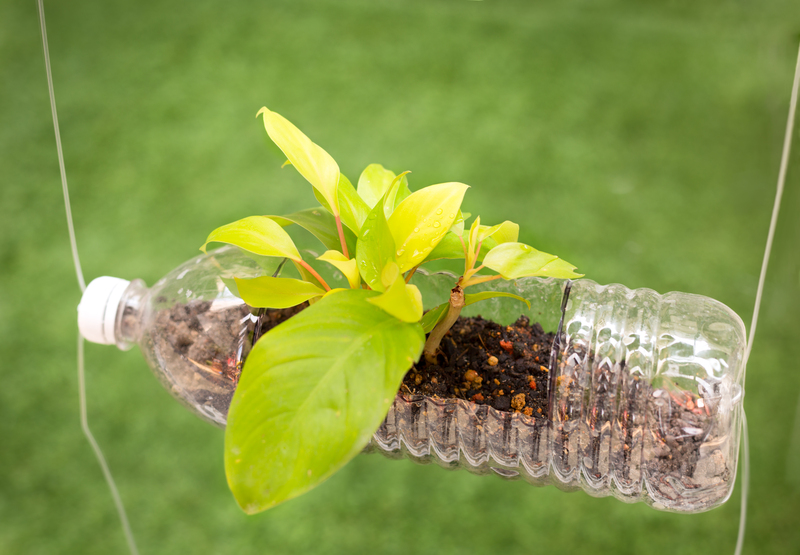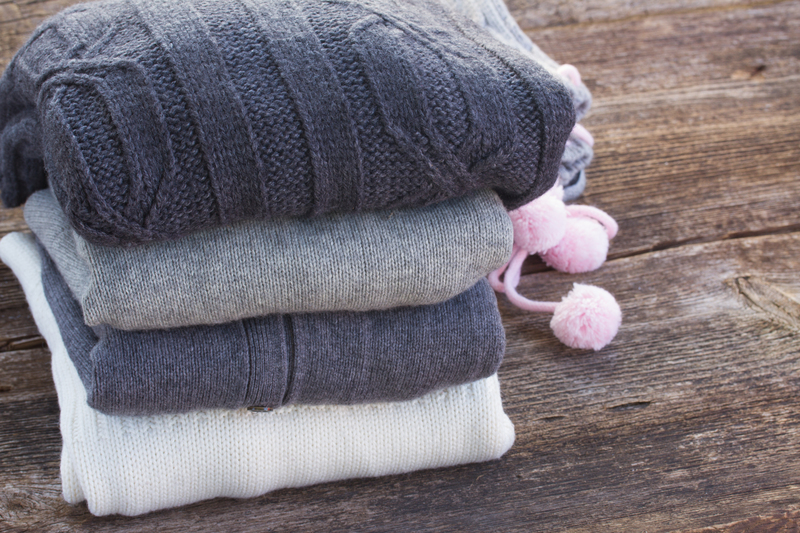Conscious Living: Plastics to Exclude for a Greener Future
In the age of sustainability, conscious living is more than a buzzword--it's an essential philosophy that guides how we interact with our planet's resources. One of the most pressing issues for environmentally minded individuals is plastic pollution. Though plastic is deeply woven into our daily lives, not all plastics are created equal, and some are particularly damaging. This comprehensive guide explores the plastics you should exclude from your routine for a more eco-friendly lifestyle.

Why Reducing Plastic Use is Critical
The environmental footprint of plastics is staggering. According to recent reports, an estimated 8 million metric tons of plastic waste enter the oceans each year. This not only harms wildlife but also contaminates food supplies and ecosystems. Adopting conscious living principles means recognizing the full lifecycle impact of the products we use--including their post-consumer waste. Considering which plastics to exclude is a crucial step in shrinking our ecological footprint.
What Is Conscious Living?
Conscious living involves making everyday choices that benefit both personal wellbeing and the health of the planet. It requires awareness of our consumption patterns and their consequences. When it comes to plastics to exclude, this means understanding which types are most harmful and learning how to avoid them as much as possible.
The Problem with Plastics: A Brief Overview
- Persistence: Most plastics do not biodegrade and can last for hundreds of years.
- Toxicity: Certain plastics contain or absorb hazardous chemicals that can leach into food, water, and the environment.
- Wildlife Hazard: Marine life, birds, and other creatures often ingest or become entangled in plastic waste.
- Microplastics: Breakdown of plastics results in tiny particles that are difficult to clean up and enter the food chain.
Identifying the Plastics to Exclude
Awareness is the first step in conscious plastic use. Understanding resin identification codes (RIC), the small numbers typically found on the bottom of plastic products (inside the recycling triangle), is fundamental. Each code corresponds to different plastic types, each with unique properties and environmental impacts.
Plastics by the Number: Breaking Down Resin Codes
- 1 - PET or PETE (Polyethylene Terephthalate): Commonly used for water and soda bottles. While often recycled, single-use PET products contribute heavily to global plastic waste.
- 2 - HDPE (High-Density Polyethylene): Found in milk jugs, detergent bottles, and some plastic bags. HDPE is more widely recycled but still problematic if not properly disposed of.
- 3 - PVC (Polyvinyl Chloride): Used in pipes, food wraps, and blister packaging. Contains hazardous additives and is difficult to recycle.
- 4 - LDPE (Low-Density Polyethylene): Used for plastic bags, six-pack rings, and food wraps. Not widely recycled and often ends up in the environment.
- 5 - PP (Polypropylene): Used for straws, bottle caps, and food containers. Some recycling programs accept it, but many do not.
- 6 - PS (Polystyrene): Found in disposable cutlery, plates, and Styrofoam packaging. Extremely difficult to recycle and a leading source of pollution.
- 7 - Other: Includes polycarbonate, BPA-containing plastics, and bio-based plastics. Many are not recyclable or safe for repeated use.
Top 5 Plastics to Exclude from Your Life
To practice true conscious living, prioritize avoiding the following plastics:
- PVC (Polyvinyl Chloride, #3): Contains phthalates and heavy metals that can leach into food and are linked to health issues. Common in plastic wrap, toys, and pipes.
- PS (Polystyrene, #6): Used in foam cups, egg cartons, and to-go food containers. Polystyrene is a persistent pollutant and harmful to marine life.
- LDPE (Low-Density Polyethylene, #4): While convenient, products like plastic shopping bags are rarely recycled and easily escape into the environment.
- BPA-Containing Plastics (Often #7): Bisphenol A may disrupt hormones and has been found in some water bottles and food containers.
- Single-Use Plastics: Items designed for one-time use--including straws, coffee stirrers, grocery bags, cutlery, and plates--are among the largest contributors to plastic waste pollution.
Practical Alternatives to Harmful Plastics
There are sustainable, plastic-free options for nearly every type of product. Here are some simple yet impactful ways to exclude plastics from your lifestyle:
- Reusable Water Bottles: Opt for stainless steel or glass bottles instead of PET or polycarbonate plastic bottles.
- Food Storage: Choose glass containers, metal tins, or fabric wraps over plastic food storage and wrap.
- Shopping Bags: Carry cloth or jute bags in place of single-use plastic bags.
- Straws and Cutlery: Use metal, bamboo, or compostable options--keep a set with you for on-the-go meals.
- Packing Materials: Switch to recycled paper, cornstarch peanuts, or biodegradable packing sheets instead of polystyrene foam.
- Personal Care Products: Select bar soaps, shampoo bars, and products packaged in glass or paper.
Beginner's Tips for Excluding Plastics
- Start small: Replace one disposable item at a time, such as trading plastic wrap for beeswax wraps.
- Buy in bulk: Reduces packaging waste and plastic wrap from groceries and personal care products.
- Support local brands: Many local shops and markets offer products with minimal or plastic-free packaging.
- Educate others: Share your knowledge and inspire your friends and family to avoid harmful plastics.
The Health Risks of Toxic Plastics
Many of the plastics you should exclude are not only environmental hazards but also pose significant health risks. Chemicals such as BPA, phthalates, and styrene have been linked to health problems including hormone disruption, cancer, and developmental issues.
- BPA: Often found in polycarbonate plastics and epoxy resins. Can interfere with hormone levels and reproductive health.
- Phthalates: Used in PVC to increase flexibility, these chemicals are associated with developmental and reproductive toxicity.
- Styrene: Present in polystyrene foam, styrene is a possible human carcinogen and can leach into foods and drinks.
By excluding plastics that contain or are made from these chemicals, you're safeguarding your health as well as the planet.
Conscious Living: Beyond Plastics
Living with greater awareness goes beyond minimizing plastic usage. The philosophy of conscious living extends to every decision, from transportation to food choices and energy use. However, excluding harmful plastics is a practical and powerful entry point that ripples into other areas of sustainable living.
- Choose secondhand: Buy pre-loved items to prevent new plastic packaging from entering your home.
- Compost: Organic waste can be composted instead of wrapped in plastic and sent to landfills.
- Vote with your wallet: Support companies and initiatives prioritizing sustainable, plastic-free packaging.
Myths and Facts About Plastics
Myth: "All plastics are recyclable."
Fact: Only certain types (typically #1 and #2) are widely accepted in recycling programs. Many plastics, especially flexible packaging, straws, and polystyrene foam, are rarely recycled and often contaminate the recycling stream.
Myth: "Bioplastics are always eco-friendly."
Fact: Some bioplastics, while plant-based, still don't break down safely in marine environments or lack infrastructure for proper composting.
Myth: "If it says 'recyclable,' it's fine to use."
Fact: The existence of a recycling symbol does not guarantee that local facilities can process the material. Reduce and reuse are more impactful actions.
The Global Perspective on Conscious Plastic Exclusion
Globally, awareness about plastic pollution is growing. In recent years, countries and cities have introduced bans and restrictions on single-use plastics. Here are some inspiring examples:
- European Union: Ban on certain single-use plastics including straws, plates, and cutlery since 2021.
- India: Nationwide ban on single-use plastics such as bags, straws, and utensils.
- Kenya: Home to some of the world's strictest bans on plastic bags.
These measures demonstrate a collective commitment to conscious living and highlight the critical plastics to exclude for a cleaner, healthier world.

Embracing Conscious Living: Your Action Plan
Adopting a plastic-free or plastic-minimal lifestyle doesn't happen overnight. However, consistent, mindful action creates lasting change. Here's a straightforward action plan for conscious plastic exclusion:
- Do a plastic audit: Examine your home for single-use and problematic plastics.
- Prioritize exclusions: Remove PVC, polystyrene, and other hazardous plastics first.
- Switch to safe alternatives: Invest in reusable, compostable, or recyclable items.
- Stay informed: Research sustainable brands and up-to-date recycling guidelines.
- Advocate for change: Support policies and businesses that prioritize plastic reduction.
Conclusion: Making the Shift to a Plastic-Conscious Life
Every purchase is a vote for the kind of world we want to live in. By excluding hazardous plastics and adopting conscious living strategies, each of us can be a catalyst for environmental health and resilience. Remember: Your daily choices matter--and together, we can contribute to a world with cleaner oceans, safer food, and thriving communities.
Embrace conscious living today by refocusing your habits and excluding problematic plastics from your life. Not only will you help protect the planet, but you'll also elevate your personal wellbeing and inspire positive change around you.